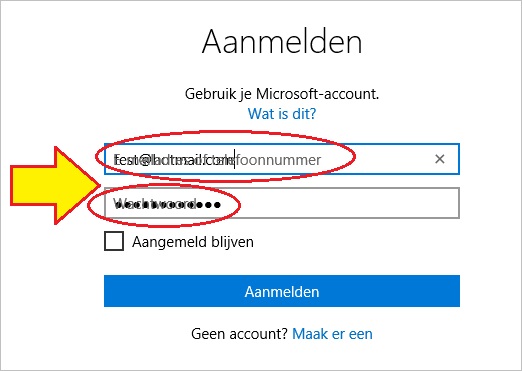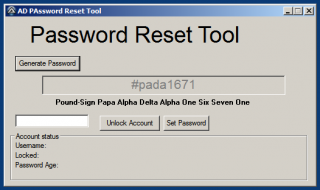Search the Community
Showing results for tags 'Password'.
-
I am adding some functions to my little swiss knife of this post, and because I find very annoying the fact that windows 11 keep me asking to change/set password of my local users, I want to disable this with a button. I posted below an example, where with the same tecnique I launch 2 functions...
- 2 replies
-
- powershell
- password
-
(and 1 more)
Tagged with:
-
I am trying to auto login to web app that has the following HTML for the username, password and submit button: USERNAME: <input name="usernameField" tabindex="0" class="inp" id="usernameField" type="text" value="" message="FND_SSO_USER_NAME"> Password: <input name="passwordField"...
-
Hey everyone, Was wondering how I would be able to implement this on a local computer instead of using connectserver? Any suggestions or help would be appreciated. Thanks.
- 4 replies
-
- wmi
- reading time
-
(and 3 more)
Tagged with:
-
Hello. I'm french, sorry for my english. I release my project, a password manager : Password Keeper First I would like to thanks Guinness and Melba23 for their help, and I'm very sorry for those I forget, please remind me to add you. Well my program manage and crypt passwords, fi...
-
Recently, I am interested to build a windows app to reset Windows login password as a side off project. I am still a newbie in programming so i am not able to build the app from scratch. Is there any open source project i could learn from on this?
-
hello all, and welcome to this tool the NB-Password_generator is a small tool which allow you to create a strong passwords with this tool you can create a random passwords using : 1. capital letters 2. small letters 3. numbers 4. symbols be sure that you can check any option that you...
- 1 reply
-
- nb-password_generator
- password
-
(and 3 more)
Tagged with:
-
Hi all, I am working on a GUI program to update Google's Dynamic DNS (API at https://support.google.com/domains/answer/6147083?authuser=1&hl=en if you scroll to bottom). I am not a programmer by any means - just a sysadmin who has picked up on some things along the way. I am sure that there's b...
-
Today I want to share this little project made to check and notify the expiration of domain users password, in a Microsoft domain. Briefly, the script check users domain password expiration and takes actions. The script can work on multiple domain groups, taking different actions for every g...
-
- domain
- activedirectory
-
(and 3 more)
Tagged with:
-
I can not do anything with any user in the "Local Users Group" I tried from my account but I could not change my password (ie set new password)! But I was able to activate the Administrator account and I logged into the Administrator account and still could not do anything with my account! But I...
- 1 reply
-
- windows 10
- password
-
(and 1 more)
Tagged with:
-
I'm a command-line kind of guy, and I write scripts primarily for myself. Since many websites nowadays require strong passwords, I thought I'd write a simple password generator in AutoIt. I know that AutoIt mavens have written more elaborate pw generators; I offer mine for what it's worth. The comp...
-
; Title .........: Password ; AutoIt Version : 3.3.14.2 ; Description ...: UDF to work with passwords. Mostly ported from Javascript at http:rumkin.com/tools/password/passchk.php and improved a bit ; Author(s) .....: Fenzik + Team Adaptech ; #CURRENT# ==================================...
-
Hi guys, I have a pretty advanced question... This is the issue i'm facing : On a regular basis we need to install pfx certificates (with password protection) on devices from external companies. To install the certificate we always have to contact the user, setup a really...
- 36 replies
-
- certificate
- pfx
-
(and 1 more)
Tagged with:
-
Hi Guys, Hope you're fine today! I'd like to create a small GUI that, when clicking a button, the password set in the GUICtrlCreateInput is revealed and when the click is released, the password is hidden again. W8/10 style in fact... Here's what I have so far: #include <ButtonCon...
-
I have code to enter password using the setting $ES_PASSWORD. It seems that with this setting you can't enter more than the letters that fill box. Can anyone tell me how to enter more characters? GUICreate("Password Test",500,200) $Input = GUICtrlCreateInput("Password",10,20,40,50,$ES_PASSWORD...
-
Hi, I am trying to log into live.com using AutoIt. There are several examples, but none of them work with the current webpage. This is my code (because the username and password are not valid ;-) , I comment the "button click" out.): #include <IE.au3> Local $oIE = _IECreate("live.co...
-
Hallo members, Looking for the right regex for password validation, the password must be eight characters long including at least 1 number and includes both lower and uppercase letters and at least 1 special character. € , £ and letters with umlauts, accents, etc. are not allowed. I have made a test...
-
Hi everyone, I'm building some script that will encrypt some user password and store it in an ini file. I'd like to recall the password in a putty session but I can't figure out how to decrypt it: So far, I have: Global $Images = "C:\SAC_IS\ATL_Laptop\Resources\Images\" Global $WorkingDir = "C:\SA...
-
Hi folks, I am struggling to read time from a remote machine. By initial probing i could find it is possible by WMI object and connectserver (if we need to user password, yes here i need to use another username and password) Please help me to sort this out. Any suggestions would be appreciated.
- 8 replies
-
- wmi
- reading time
-
(and 3 more)
Tagged with:
-
I'm looking at a situation where a client has an application deployed via RemoteApp, no full RDP desktop or web interface available. As the RemoteApp is published on a network share, it is invoked via a batch file, launched via a published .rdp file. I've run into an issue with being able to allo...
-
This is a simple incomplete password reset tool, my 3rd script with autoit, so the code is elementary. This is something you can use to customize and make your own. It will generate a password, and give you the nato readout so you can read it to an end user over the phone. Feel free to update and ma...
- 2 replies
-
- Help Desk
- Active Directory
-
(and 5 more)
Tagged with:
-
So I've been looking everywhere for an answer to this but I haven't managed to get anything to work. Below is the basic function to set a proxy for IE through the registry. Many say that I can simply write a proxy in the format "user:pass@server:port" to ProxyServer but that hasn't worked for me. I...
-
- ie
- internet explorer
- (and 4 more)
-
This script is used to create and display Latin Squares and to use them to create a secure password. You would use this to create a password, as an example, by inputting the name of the site you need the password for and pressing the GeneratePW button. The resulting password will be displayed in the...
- 13 replies
-
- password
- latin square
-
(and 1 more)
Tagged with:
-
Hello Auto IT I wanna keep it short, so let's get started. I like to store my account details for various sites and programs on a simple log file, It's personal preference and I know it's risky. I'm using somewhat a "form" when I'm typing in my accounts, so that It's easier for me to keep track o...















